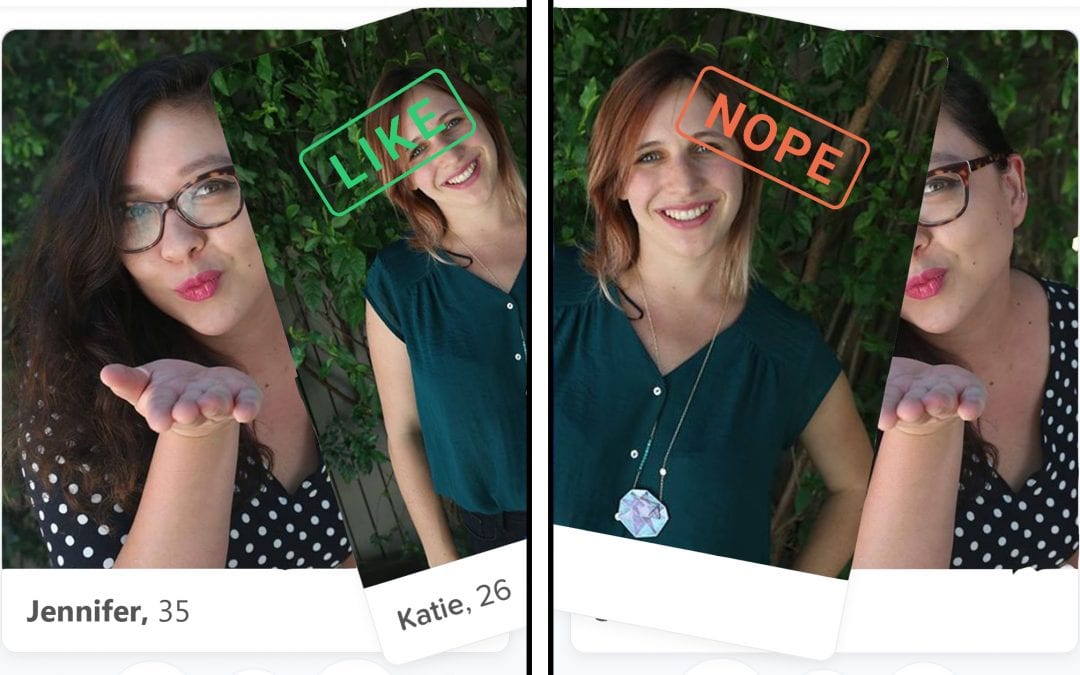Jaime Comber, 2018
“As a typical millennial constantly glued to my phone, my virtual life has fully merged with my real life. There is no difference any more. Tinder is how I meet people, so this is my reality.”
(Duportail, 2017)
Over the last thirty years, technology has transformed the ways that people meet their romantic and sexual partners (Rosenfeld & Thomas, 2012). Mobile dating apps, such as Tinder, Grindr and Bumble, have become increasingly popular (Finkel, Eastwick, KArney, Reis, & Sprecher, 2012). They provide users with access to an unprecedented number of possible partners, and turn dating into a game-like experience, which has become part of many people’s daily routines. Users of popular app Tinder (over 50 million people worldwide) spend an average of 35 minutes a day “swiping” and chatting with others (Bloomberg News, 2016).
Despite their popularity, relatively little is known about how people use mobile dating apps, and how regular use of the apps might impact a person’s emotions and behaviours. We wanted to investigate one element of this question; what cues on these apps are interpreted by users as rejection and what are the emotional and social impacts of any implied rejection?
Research has shown people are very sensitive to social cues of rejection and ostracism (Kerr & Levine, 2008, Zadro et al., 2004). We have a tendency to read rejection into ambiguous circumstances and are even hurt by rejection from non-human sources, such as computers (Gonsalkorale & Williams, 2007). Humans work together and rely on each other to survive, so there is a clear evolutionary advantage to being able to recognise rejection.
In our normal, day-to-day interactions, we use a rich variety of verbal and non-verbal cues to identify acceptance and rejection. These include posture, tone of voice and facial expressions. When a person is chatting with someone else online they do not have access to these cues, so how do they monitor acceptance and rejection? One school of thought, social information professing theory, suggests that people are extra sensitive to other cues available online, such as how long it takes a person to respond to an email or how many likes their profile has (Walther, Anderson, & Park, 1994; Walther & Tidwell, 1995; Wolf et al., 2015).
In this experiment, we hypothesised that users of mobile dating apps would use the cues available to them to identify whether they were being rejected or accepted. The app Tinder shows users a picture of another user and asks them to indicate whether they “like” or don’t like (“nope”) that person. If that person has also indicated they like them, users are notified of this through an “It’s a match” message, and can chat with their match. We created a similar interface online, where users were shown a photo (ostensibly of another user) and then either shown a “this user likes you too” message after the photo or no message. Some participants had lots of “liking” messages, some participants had few, and a control group received no messages and were given no information about possible messages.
We hypothesised that participants with fewer liking messages would feel more rejected, experience lower self-esteem and demonstrate reduced prosocial behaviour. However, we were surprised to find that the number of matching messages (or presence of messages at all) did not affect participants’ feelings of acceptance and rejection, self-esteem or prosocial and aggressive behavioural tendencies.
One possible explanation for these findings is that people are resilient to small amounts of implied rejection and acceptance in a dating app setting. Other studies have shown people can be resilient to small instances of rejection, particularly when this occurs on a single occasion or by strangers (Buckley, Winkel, & Leary, 2004; Finkel & Baumeister, 2010). In this experiment, participants were only asked to like or dislike 30 photographs, and most completed this stage quickly, within five minutes. This differs from the real-life use of Tinder, which involves swiping on average 140 photographs with each use, and repeating this behaviour regularly (Bloomberg News, 2016).
Another possible explanation is that participants may have been protecting their self-esteem by blaming the rejection on external factors (Major, Kaiser, & McCoy, 2003). Participants may have chosen to disbelieve the experiment rather than believe they were being rejected. They were told at the beginning of the experiment that others had liked or disliked their photographs, which may have allowed them to prepare themselves to resist a short-term threat to their self-esteem.
A barrier we faced in this study was a lack of established evidence on what people interpret as acceptance and rejection in these situations. Mobile dating apps such as Tinder are widely used and little understood. We suggest future research should continue to investigate how users feel as a result of using the app. Many people use these apps repeatedly over periods of weeks or months, and we would recommend longitudinal research into the experience of people who use them for prolonged periods. Prolonged experiences of social exclusion have been linked to feelings of alienation, depression, helplessness, and unworthiness (Williams, 2007). Given the ubiquitousness of these apps in the dating culture for many young people, it is vital that we continue to investigate both the short and long-term emotional and behavioural effects of using them.



Recent Comments